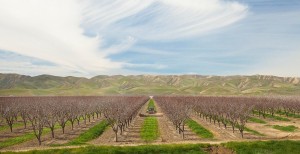By Ann Mills
Note – The author is a former USDA deputy undersecretary for natural resources and development.
At his Senate confirmation hearing last Thursday, Governor Sonny Purdue opened and closed his remarks by quoting his father: “If you take care of the land, the land will take care of you.” These are hopeful words for agricultural conservation advocates gearing up to engage in the budget process and Farm Bill reauthorization.
Embedded in this phrase is the idea that sustainable agricultural practices are cornerstones to a durable agricultural infrastructure — an infrastructure that supports long-term agricultural production. And an infrastructure that stewards our natural resources– or as many now say – generates ecosystem services such as abundant clean water, protection of wildlife habitat and open spaces, and reduction in greenhouse gases. These ecosystem services are an emerging class of agricultural products that will generate new sources of revenue for America’s farmers and ranchers…if federal agencies continue to make important investments.
The President’s “skinny budget” calls for a 21 percent cut in the US Department of Agriculture’s discretionary budget. While we don’t know the details, it likely includes cuts to the Natural Resources Conservation Service’s (NRCS) capacity to provide technical assistance to farmers and ranchers who want to develop conservation plans for their operations and begin transitioning to more sustainable practices.
Agricultural and conservation groups have already sounded alarms about the impact of these budget cuts on productivity, soil health, wildlife, water resource protection, and the recreation economy.
As Congress takes up the FY18 budget, here are several things to keep in mind:
- NRCS’s discretionary budget has been cut on average by 10% over the past number of years, including steady cuts to resources supporting the agronomists, soil scientists, engineers and other field staff experts who work side-by-side with farmers to develop conservation plans – blueprints for sustainable farm operations. These plans can’t be phoned in from Washington. To be useful, they have to reflect the unique attributes of the land and the producer’s individual business strategy.
- Some voices suggest that the private sector can step in and provide these services. Many producers, including new and beginning farmers, operate on narrow margins and are not in a position to hire private technical service providers. NRCS fills that critical gap with locally-based experts who bring decades of institutional knowledge and science-based tools to help them design lasting conservation practices.
- NRCS has not seen the last of its cuts. It is likely there will be “Changes to Mandatory Programs” (CHIMPs) to its budget again this year through the appropriations process, meaning programs like the Environmental Quality Incentives Program (EQIP) will take a hit as dollars are shifted to make up cuts to another part of the budget. These are the workhorse programs that match farmer investments in what is often a cost-intensive and lengthy transition to more sustainable practices that have long term payoffs for all of us. Over each of the past several years, CHIMPS have taken a $350 million bite out of EQIP. If recent budgets are an indicator of what’s to come, this would mean losing hundreds of millions of dollars in on-farm conservation investments like cover crops, conservation tillage, forest buffer strips, precision nutrient management and irrigation, rotational grazing, and wetland easements. These are the very practices that improve water quality, conserve scarce water resources, reduce greenhouse gas emissions, sequester carbon, and provide critical habitat.
Over the past 9 years, NRCS has worked with a half million producers to make conservation investments on more than 400 million acres of farm and ranchlands. This is surely an impressive number. But there are 3 billion acres of private land in the lower 48 states and there is a tremendous opportunity to do more. Farmers and ranchers want to do more, which is why NRCS programs are oversubscribed by as much as 75% in any given year.
Imagine a future where farmers and ranchers have adequate access to the tools and resources to help them sustainably scale up the products Americans want – abundant food, fiber, fuel, clean water, and healthy ecosystems that provide for wildlife and a vibrant recreational economy.
Governor Purdue’s statement last Thursday spoke of maximizing the opportunity for the men and women of America’s agriculture and agribusiness sector to create jobs and prosper. He spoke of prioritizing customer service. And he re-emphasized the importance of stewarding our natural resources so that “we leave it better than we found it.” This is a terrific starting point for growing a sustainable agricultural infrastructure: creating new opportunities for farmers to produce traditional agricultural products and ecosystem services; protecting the important customer service that NRCS technical assistance offers; and helping meet the increasing demand for conservation programs that protect our land, our water and our air.
Link to item on George Washington University’s Food Institute web site



